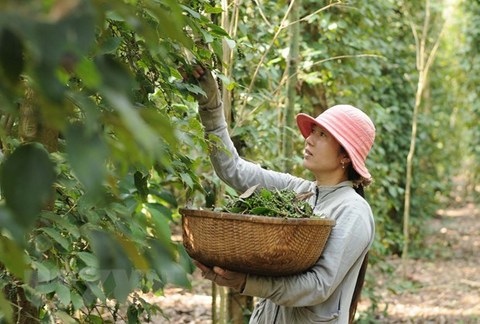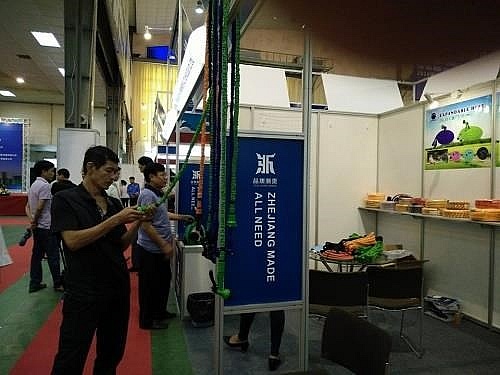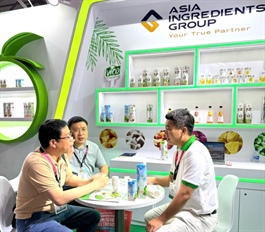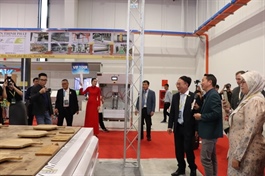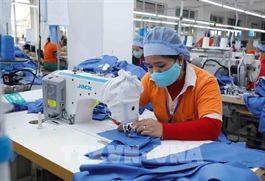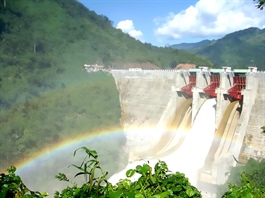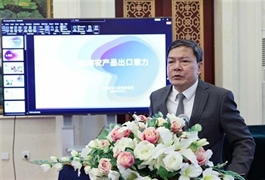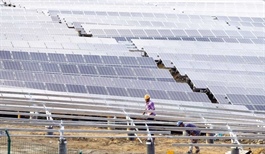Việt Nam’s agricultural transformation into global export powerhouse
Việt Nam’s agricultural transformation into global export powerhouse
A revolution in the application of science and technology, combined with institutional reform, has marked a major turning point for Vietnamese agriculture, particularly in the rice sector.
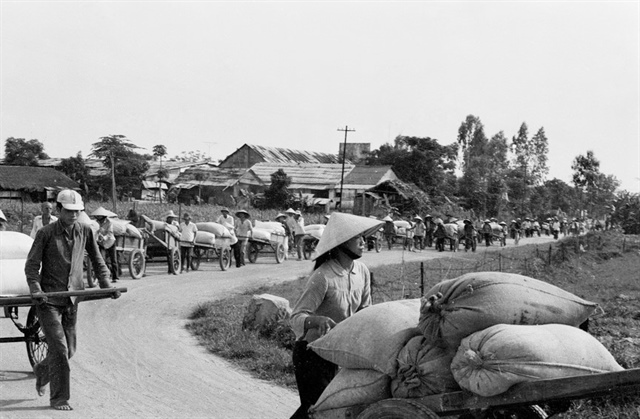
Trường Nghĩa Company in Pắc Ta commune of Tân Uyên District (now Pắc Ta commune), Lai Châu Province, grows vegetables and fruits for domestic consumption and export, creating jobs for hundreds of locals. — VNA/VNS Photo |
Việt Nam has undergone a remarkable transformation in agriculture to emerge as one of the world’s leading agricultural exporters, playing a crucial role in the global food supply chain.
According to the National Statistics Office under the Ministry of Finance, the output of unhusked rice between 1976 and 1980 averaged just 13–14 million tonnes annually. In 1978, production fell to a historic low of 9.8 million tonnes, forcing Việt Nam to import nearly 1.6 million tonnes of milled rice per year.
At the Sixth National Party Congress in 1986, the Communist Party of Việt Nam designated agriculture as a top priority. A series of bold reforms followed, most notably the Politburo’s Resolution 10-NQ/TW, dated April 5, 1988, which gave farmers autonomy in production and business on allocated land plots over extended periods.
This landmark policy was a crucial part of the Đổi Mới (Renewal) policy, empowering farmers and injecting vitality into Việt Nam’s agricultural development.
More recently, a revolution in the application of science and technology, combined with institutional reform, has marked a major turning point for Vietnamese agriculture, particularly in the rice sector.
Once reliant on traditional knowledge, manual labour and natural conditions, rice production has undergone a profound transformation towards modernisation, sustainability and high added value.

Trường Nghĩa Company in Pắc Ta commune of Tân Uyên District (now Pắc Ta commune), Lai Châu Province, grows vegetables and fruits for domestic consumption and export, creating jobs for hundreds of locals. — VNA/VNS Photo |
The Ministry of Agriculture and Environment (MAE) has reported that thus far, Việt Nam has developed and introduced over 1,600 new rice varieties with improved yields, quality and resilience.
Unhusked rice productivity averages up to 7.2 tonnes per hectare nationwide, consolidating Việt Nam’s place among the world’s top rice exporters. Flagship varieties such as ST24 and ST25 have been recognised among the world’s finest.
Mechanisation has also grown rapidly. This year, mechanisation rates reached over 97 per cent for land preparation and over 70 per cent for harvesting. The use of modern equipment has reduced labour, shortened production cycles, boosted economic efficiency and minimised post-harvest losses.
Meanwhile, advanced cultivation techniques – such as the system of rice intensification, integrated pest management, VietGAP, GlobalGAP and organic farming – have been widely adopted, promoting safe and environmentally friendly farming practices, according to the MAE.
High-tech agricultural models in Việt Nam have gone beyond production, forming closed-loop ecosystems that integrate cultivation, preliminary processing, value-added processing and distribution.
Building on that foundation, Việt Nam is moving towards developing ecological agriculture, modern rural areas and a civilised farming community, in line with the spirit of the resolution on agriculture, farmers and rural areas issued at the 7th session of the 10th-tenure Party Central Committee.
The resolution outlines a comprehensive development policy, from rural infrastructure to workforce training. Guided by the Party’s resolutions, the national target programme on new-style rural area development has fundamentally transformed the landscape for over 70 per cent of communes nationwide.
As of June, a total of 6,070 communes have met new-style rural area standards, with more than 1,200 recognised as advanced or model communes.
In particular, the One Commune, One Product (OCOP) programme has created more than 8,400 products, 65 per cent of which are rated three stars or higher. Many OCOP products are exported to demanding markets like the US, Japan and the Republic of Korea. New-style cooperatives and cooperative groups are flourishing, strengthening farmer links within value chains.
“The recent policies on agriculture, farmers and rural areas have demonstrated a major shift in thinking – from farmers simply growing rice to farmers playing a proactive role in production and in the market,” said Professor Dr Trần Đức Viên, former Director of the Việt Nam National University of Agriculture.
“This is also an opportunity for shaping a new generation of smart and digital-era farmers,” he added.
Maintaining Việt Nam’s status as an agricultural powerhouse
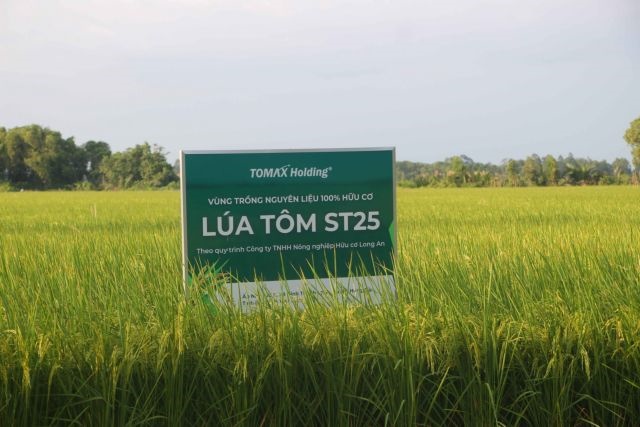
Trường Nghĩa Company in Pắc Ta commune of Tân Uyên District (now Pắc Ta commune), Lai Châu Province, grows vegetables and fruits for domestic consumption and export, creating jobs for hundreds of locals. — VNA/VNS Photo |
According to the MAE, Việt Nam has consistently exported 6–7 million tonnes of milled rice annually since 2010. In 2023, the volume approximated 8.3 million tonnes, generating nearly US$4.8 billion.
In the first half of 2025 alone, total agro-forestry-fishery exports hit $33.8 billion, up 15.5 per cent from a year earlier, with a trade surplus of $9.8 billion – a year-on-year increase of 16.5 per cent.
This year, the agricultural sector targets a record export value of $70 billion. Of that, rice exports are expected to reach 4.9 million tonnes, bringing home over $2.5 billion in revenue.
Việt Nam now leads the world in cashew exports and ranks second in rice and coffee, third in fruits and vegetables and fourth in aquatic products. Many key products have gained access to high-standard markets in the EU, Japan, the Republic of Korea and the US. The focus is increasingly shifting to premium products like ST25 rice, specialty coffee, organic shrimp and processed fruit.
“We’re no longer just exporting products – we’re exporting green and sustainable value,” said Director General of the ministry's Department of International Cooperation Dr Nguyễn Đỗ Anh Tuấn. “Our goods come with traceable origins and global social responsibility.”
Nevertheless, Vietnamese agriculture is also facing many challenges posed by climate change, an ageing workforce, fierce cost competition and stringent quality and traceability requirements. The sector recognises that science, technology and digital transformation are the only path forward.
The Government has adopted a strategy for sustainable agricultural and rural development for 2021–2030. This strategy targets ecological, circular and smart agriculture, annual agricultural growth of 2.5–3 per cent, exports worth $60–70 billion by 2030, traceability for 70 per cent of products and half of all communes achieving the model new-style rural area status.
- 08:59 07/08/2025


